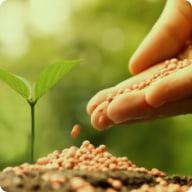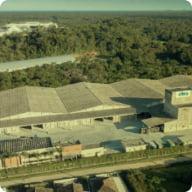Nitrogen (N) is the most demanded nutrient for crops.

It consists of essential metabolites for plant development, such as amino acids, proteins, enzymes, nucleic acids (DNA and RNA), and vitamins. The formats of N absorbed by plants are nitrate (NO3–) and ammonium (NH4+). The arrival of these ions to the roots happens by mass flow together with the water that is absorbed by the plant.
In the soil, several chemical reactions occur involving N. These reactions are influenced by the environment, which directly changes the dynamics of the element. In turn, alters N absorption by plants. It should be highlighted, N fixation by legumes, nitrate leaching (NO3–), ammonium volatilization (NH3), and nitrogen oxides emissions. (Batista et al., 2018)
NH3 volatilization is one of the most common N loss processes in agriculture, mainly due to the use of urea (CO(NH2)2), which is the most widely used nitrogen fertilizer. Urea is transformed by the action of the enzyme urease, which promotes the transformation of NH4+ into NH3, which is a gas that is volatilized, that is, it is lost in the atmosphere. This volatilization can reach more than 50% of the total N applied via urea (Tasca et al., 2011).
To reduce these losses, some actions can be taken, for example: mechanical incorporation of urea up to 10 cm in the soil would be enough to avoid NH3 losses. However, this operation has low operating efficiency, which in many situations makes its adoption unfeasible. Furthermore, no-tillage can make this management difficult due to the amount of straw. Applying urea on dry soil can also be an interesting alternative, the key point for the success of this application would be to apply the fertilizer before about 15 mma rain or irrigation. This volume would be enough to incorporate N into the soil and avoid losses. Nevertheless, this practice becomes somewhat unstable when there is no irrigation system, since making a rain forecast is usually not always accurate.
The use of stabilized urea with the use of urease inhibitors (better-known as N-butyl thiophosphoric triamide or NBPT) to nitrogen fertilizers would be an excellent management strategy to reduce volatilization. There are several scientific studies that show that using urea with NBPT reduces losses by volatilization. For instance, Soares (2011), showed that stabilized urea reduced volatilization in the order of 52–53%, compared to white urea (untreated).
In a literature reviewed by Cantarella et al. (2018), it was shown that the use of urea stabilized with NBPT increased the productivity by 6% in several crops when compared to white urea (no treatment). That’s why using stabilized urea from reputable and consolidated companies in the market is extremely important to always seek to increase the efficiency of nitrogen use and consequently the profitability of agricultural activity. CIBRA has the Nitrocap product line, which ensures the safety of nitrogen application by the farmer, drastically reducing losses due to volatilization.
References
BATISTA, M.A.; INOUE, T.T.; ESPER-NETO, M.; MUNIZ, A.S. Princípios de fertilidade do solo, adubação e nutrição mineral. In: BRANDÃO-FILHO, J.U.T.; FREITAS, P.S.L.; BERIAN, L.O.S.; GOTO, R. Hortaliças-fruto. Maringá: EDUEM, 2018. p.113-161.
CANTARELLA, Het al. Agronomic efficiency of NBPT as a urease inhibitor: A review. Journal of advanced research, v. 13, p. 19-27, 2018.
Soares (2011). Efeito de inibidores de urease e de nitrificação na volatilização de NH3 pela aplicação superficial de ureia no solo (Effect of urease and nitrification inhibitors on NH3 volatilization with surface-application of urea to soil)
Agronomic Institute of Campinas, Campinas (2011)
Tasca FA, Ernani PR, Rogeri DA, Gatiboni LC, Cassol PC. Volatilização de amônia do solo após a aplicação de ureia convencional ou com inibidor de urease. Rev Bras Cienc Solo. 2011;35:493-509.















